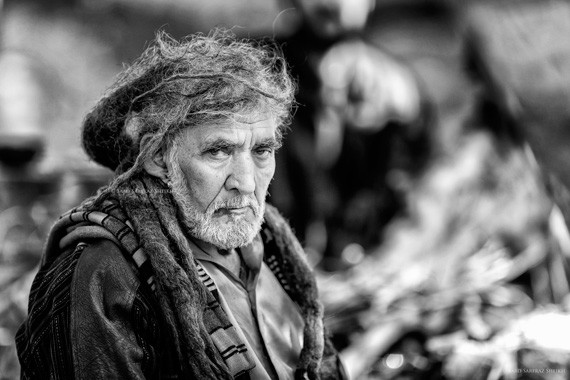It is often believed that good photos are ones with beautiful colors. However, there are other forms of photography such as black and white, monochromatic, infrared etc. There is much more than simple, shining colors in pictures.
Photography is the recording of light regardless of color and outcome. Black and white has been popular since the early days where cameras would only take these images and were unable to interpret colors.

Photo by Saad Sarfraz Sheikh; ISO 800, f/2, 1/1250 exposure.
Black and white photography can be a hard task because your subject is the most important in these photos. With practice you can get the hang of understanding the lighting, the subject, and how you want to compose your final image. It is more like a mind-play where you have to imagine your subject in black and white before you shoot the photograph. Below we will explain some common techniques to help you become better at interpreting the situation for a great shot.
You need to understand the incidence and the direction of the light. Pay close attention to how the light hits the subject and reflects off the details, the ups and downs and the curvature in the subject’s surface. Below are some basic considerations for black and white photography.
Viewpoint
The most important consideration is the viewpoint. Before you even touch your camera you want to know what is it that you want to photograph and how you want to present it. You also want to give a little thought on the angles you might want to shoot from.

Photo by Emilien Etienne; ISO 200, f/4, 1/200 exposure.
Amount of Light
You want to make sure that you have enough light to capture the details. Remember that we don’t have colors to distinguish and make details. We have to let the light do the trick. A beautiful blue sky will look gray in a black and white photo.
Source of Light
An understanding of the source of light is important because different sources have to be shot differently and with different settings. Ask yourself where the light is coming from. Is it coming from a primary light source such as the sun or an artificial flash? Is the light coming from a reflected source such as off a wall or a reflector?
Quality of Light
First think of the types of shadows and contrast you want. Direct light produces sharp dark shadows. Diffused or indirect light produces softer tones. For dark shadows and high contrast difference between light and dark use direct light. On the other hand, for tones of gray and softer looks use a diffused light.

Photo by Jason Tan.
Direction of Light
Decide on the type of depth, dimensions and details you want in your photo. Side lights give larger dimensions. Direct light hitting from front points out texture and depth. Lights from the rear help in reducing details. Place the lights according to your desire.
Shape
Since you don’t have colors you need to decide how you want to portray the shape. Shape is depicted by blocks of light and dark areas in the photo.
Tone
You build your tone through your photography. For example dark tones use harsh shadows to portray a sad or empty mood. However, light and smooth textures convey open and free feelings.
Texture
Texture in the subject’s surface can define the realism in the photo while smooth or blurred out details produce mythic or ideal images.

Photo by Javier Díaz Barrera; ISO 100, f/8, 1/250.
Lines
Lines can be used to draw attention to a certain point in a photo. They provide a focus of attention. Lines are also used to convey movement and tension.
Order
Just like music photography can be about rhythm. Repeated lines and shapes produce patterns and give a rhythmic sense to the image.
About the Author:
Balal Rizvi is an author for RQStudios.
Black and white photography is not as complicated as it may seem at first. All you have to do is learn how to play with the light. Now, get out there and start framing some great shots and express your mind and thought.
Like This Article?
Don't Miss The Next One!
Join over 100,000 photographers of all experience levels who receive our free photography tips and articles to stay current:






Great tutorial and very easy to follow. I really like how you achieved the end result without a lot of effort. Thanks for sharing
Great tips, love the Buffalo picture! Another great thing to shoot in B&W is of course, street photography.
Awesome views for it.